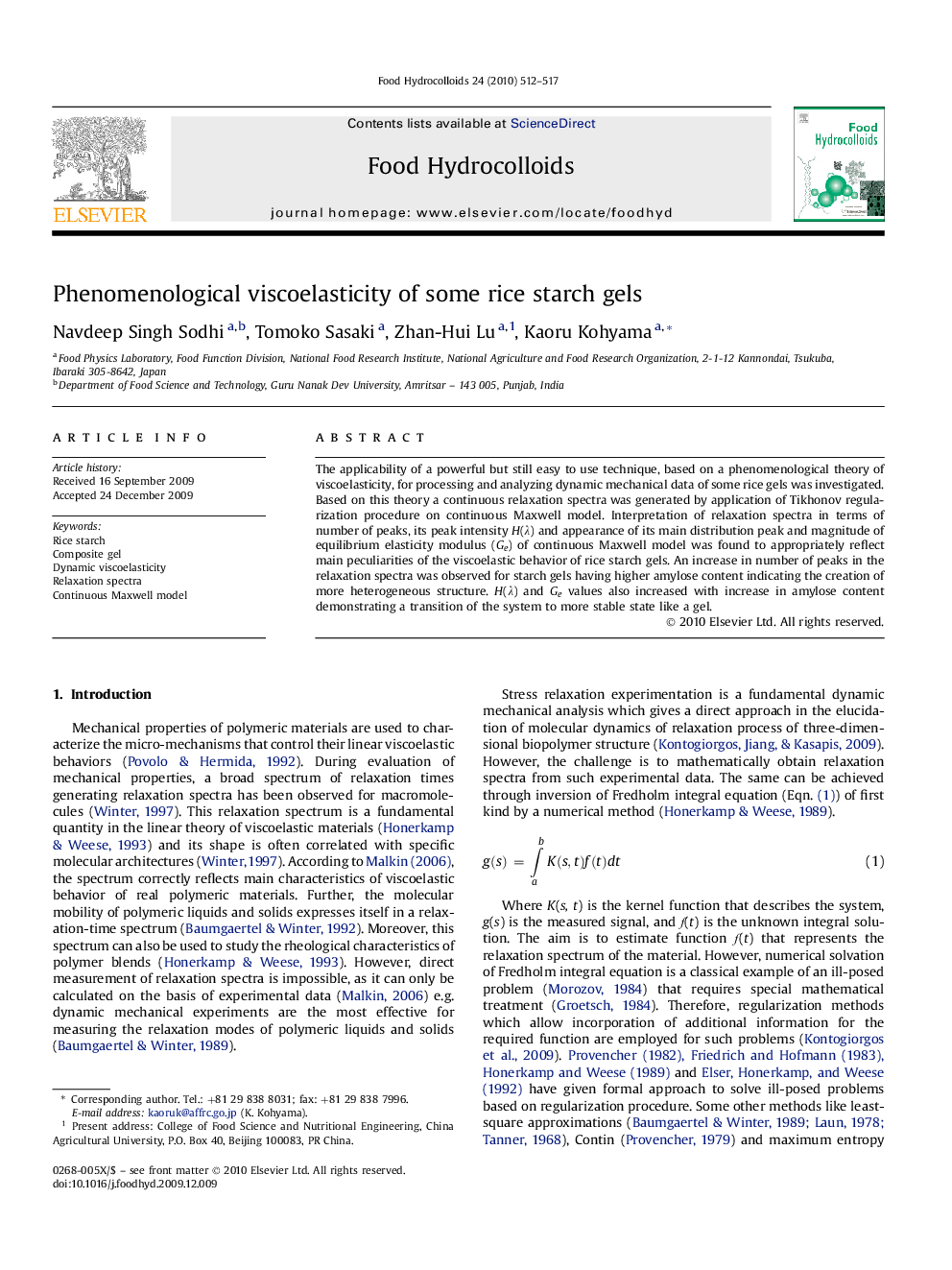| Article ID | Journal | Published Year | Pages | File Type |
|---|---|---|---|---|
| 605756 | Food Hydrocolloids | 2010 | 6 Pages |
The applicability of a powerful but still easy to use technique, based on a phenomenological theory of viscoelasticity, for processing and analyzing dynamic mechanical data of some rice gels was investigated. Based on this theory a continuous relaxation spectra was generated by application of Tikhonov regularization procedure on continuous Maxwell model. Interpretation of relaxation spectra in terms of number of peaks, its peak intensity H(λ) and appearance of its main distribution peak and magnitude of equilibrium elasticity modulus (Ge) of continuous Maxwell model was found to appropriately reflect main peculiarities of the viscoelastic behavior of rice starch gels. An increase in number of peaks in the relaxation spectra was observed for starch gels having higher amylose content indicating the creation of more heterogeneous structure. H(λ) and Ge values also increased with increase in amylose content demonstrating a transition of the system to more stable state like a gel.
Graphical abstract Relaxation time spectra extracted from dynamic mechanical measurements could unveil the main peculiarities of viscoelastic behavior of rice starch gels.Figure optionsDownload full-size imageDownload as PowerPoint slide
